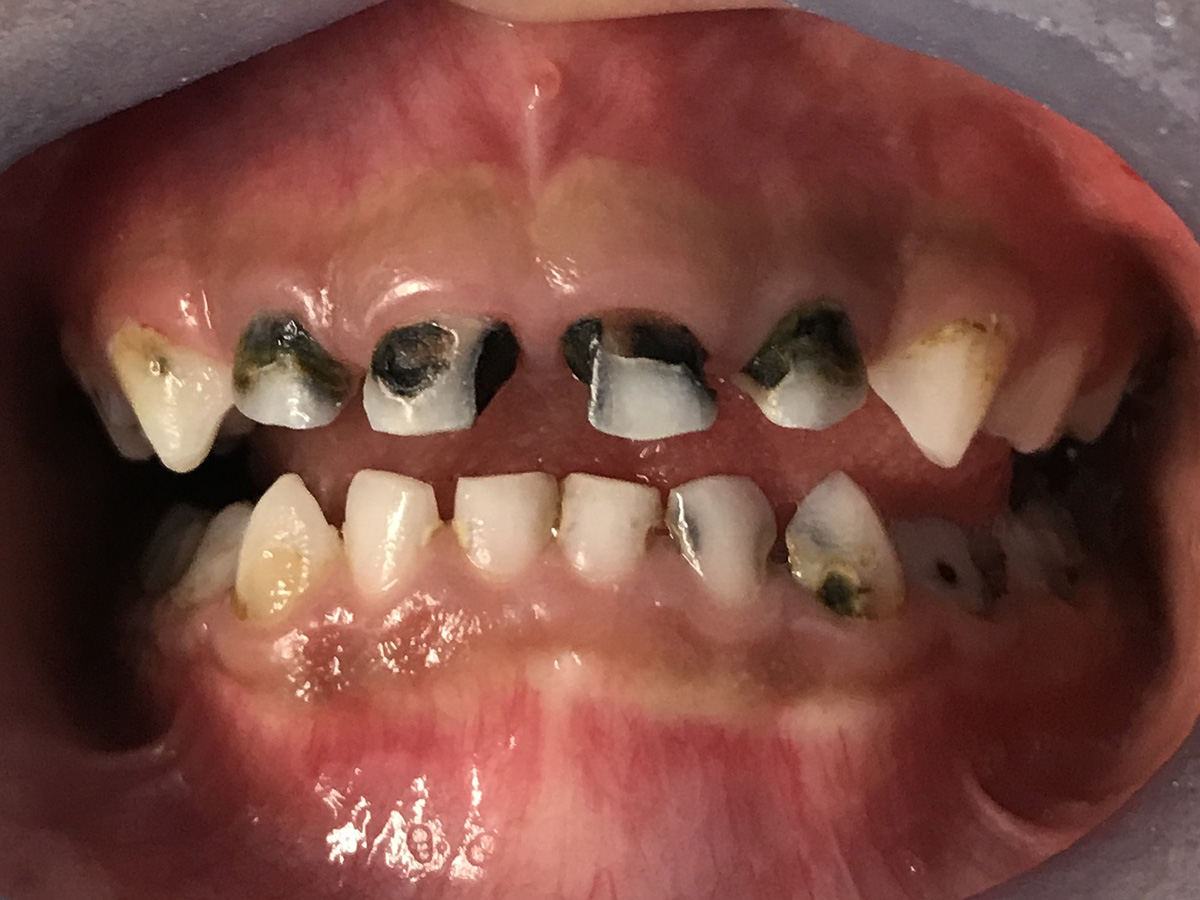Baby bottle tooth decay! Know what to look for
The first time I was told to stop my daughter from taking a milk bottle to sleep and brush her teeth before putting her to bed, I laughed out loud thinking that it’s just a new parenting trend from the 100 trends shoved my way every day.
I was shocked later to find that “baby bottle tooth decay” is a recognised disease - it's also known as early childhood caries - and it's a problem diagnosed quite often in children under the age of five.
According to the American Academy of Pediatrics, tooth decay can develop as soon as the first tooth shows itself. In UAE, eight out of 10 children between the ages of 6 months and 5 years suffer from tooth decay, say paediatricians.
“Tooth decay actually is a bacterial disease and in fact, [it is] an infectious one. [It] develops when a baby’s mouth is infected by an acid-producing bacteria. [It] is the most common chronic childhood disease according to The American Academy of Pediatric Dentistry,” explained Dr Yasmine Kottaitm, a Pediatric dentist at myPedia clinic in Dubai healthcare city.
Mothers with cavities can transmit oral bacteria to their babies easily, while sharing a spoon, for example. Babies who are teething can also get bacteria, as they keep biting on toys, pacifiers and even their hands.
“Bacteria develops inside a baby['s] mouth and parents would think it’s still early. Nothing interrupts that bacteria and it becomes vicious, feeding and converting sugars from milk and food into acid. This acid dissolves the outer layer of the teeth, causing them to decay.”
Parents are urged to take their toddlers to a paediatric dentist at an early age, first visit should be between six and 12 months of age.
And what is the difference between a paediatric dentist and a regular dentist? A pediatric dentist would have completed additional years of studying with a focus on infants, children and children with special needs.
“Your baby at six months would have not, most probably, developed [tooth] decay but a doctor can provide a tailored preventive dental care plan. Baby bottle tooth decay is not only bacterial transmission, also the brushing technique, nutrition and fluoride dosage are all factors that work together to prevent decay,” Dr Yasmine explained.
One of the best preventive measures, doctors say, is brushing, even for a six-month-old baby who only has one or two teeth, you can still wipe the tooth after feeding. “At least I have three cases every day of babies under two years with decay and have to go through dental procedures. Brushing and a low sugar diet is very important.”

“I had a baby girl patient, under two years, this girl had the weirdest decay. A circle hole in her front teeth apart from the shaped decay. It’s also very rare to see lower teeth affected, I kept asking and investigating with the mother so I can understand how this happened. The mother dips her daughter's pacifier in sugary water and gives it to her,” Dr Yasmine said.
It might be called 'baby bottle tooth decay', but it’s not only milk, all kinds of high-sugar foods like juice and cereals can trigger the disease.
Baby teeth have a different structure than adults, they are smaller with different mineral composition, thus the decay reaches the root canal faster than an adult.
Symptoms
The early symptom of decay, according to Dr Yasmine, is a change in structure of the tooth. When parents see white spots on the tooth's surface they should consult a doctor. At that early stage the baby would be given a fluoride treatment. this involves placing fluoride varnish over the tooth that will stop bacteria from developing and will help to rebuild the surface enamel.
If decay is spotted at a later stage, like brown or black spots, bleeding gums, bad breath or irritability then a fluoride treatment would no longer be beneficial and decay removal is done through an operation with general anesthesia.
“We start with an X-ray to see if the cavity is still in the first layers of the tooth or it reached root canal. If decay is moderate we stop it with simple procedure. If it reached root canal, then full anesthesia is administered as there is no other way to keep a toddler still with a wide open mouth, and we clean and place a zirconia crown in place,” Dr Yasmine explained.
Most parents don’t take teeth issues of toddlers very seriously, but Dr Yasmine warned: “An untreated decay that reaches the root canal can eat further through tissues reaching the jaw bone and causing an abscess. Keep in mind these are toddlers, the distance between organs is still short, and tissues also are still soft so bacteria travels mush faster than in adults.”
If a tooth breaks from decay, a parent shouldn’t think that a permanent tooth will replace it.
“I had a case of a five-year old who was hospitalised when his left eye got inflamed. The boy was treated for 4 days in the hospital for eye socket infection. Parents got him to me as an abscess was found in the jaw tissues that have spread towards the eye. An untreated decay could have caused a permanent blindness.”
So the best way to avoid all these problems of 'baby bottle decay doctors' is brushing the baby's teeth as early as 6 months, a low sugar diet, and giving your toddler lots of water which increase saliva.

0 Comments:
Post a Comment
<< Home